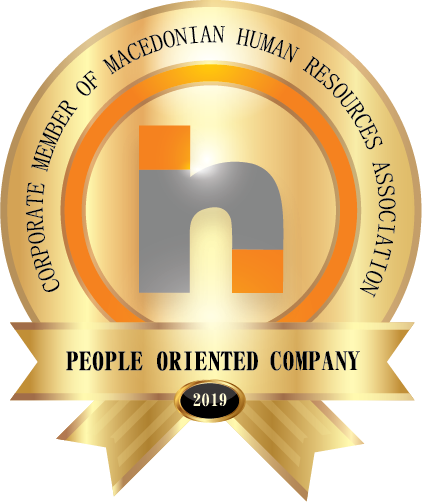
Digitalization & the need for new skills
Last week, during the Davos Agenda organized by World Economic Forum, a few statements from the speakers drew our attention, because they are fully related with this Newsletter’s topic.
Digital technologies have helped us immensely during the pandemic, but a complete digital transformation is only possible based on trust.
Ursula von der Leyen
We have never been as reliant on digital technologies as before: we use them to connect to our families and communities, manage our economic systems and grow with innovation. Yet, the digital transition should be available to all, and it should foster confidence among all stakeholders.
Sunit Saran
The Covid-19 pandemic has accelerated the uptake of new digital technologies, and organizations recognize digital tools as the leverage to spur innovation, increase efficiency, and ultimately grow. However, the ability of global companies to harness the growth potential of new technology adoption is hindered by skills shortages. (p. 35). According to the last World Economic Forum report on the Future of Jobs, companies provide access to reskilling and upskilling to 62% of their workforce, and by 2025 they will expand that provision to a further 11% of their workforce. The sudden need for new skills creates new trends in the workforce: workers spin around professions with different skill sets, and even mid-career job transitions are accompanied by substantial reskilling and upskilling. The capacity of companies to provide opportunities for learning and embrace such changes determines their success. Without such flexibility in providing reskilling in a short time, skills shortages will persist, increasing the risk of a productivity lag.
Monitoring upskilling and reskilling to leverage human potential
Companies without the tools to account for the value of skills and capabilities lack oversight of the depreciation or appreciation of one of their key intangible assets—the capabilities of their workforce. In times of fast digital transition, companies need to assess employees’ preparedness to embrace new technologies. Without such monitoring, setting the right investment strategy for reskilling and upskilling becomes a challenging feat.
Companies need to assess whether employees possess essential digital skills—including communication, cyber safety, and information processing. However, independently of the sector or business unit employees are working in, it has become increasingly important to master cross-cutting soft skills, such as critical thinking and analysis, self-management, working with people, and managing and communicating activities.
On-purpose HR reskilling and upskilling tools help companies organize, monitor, and better their skills strategies.
The figures for homeworking
The latest figures show that work from home is here to last. It benefits businesses, saving about $11,000 per year for every employee who works remotely half of the time. According to Smallbiztrends, it benefits even workers, as 60% of remote workers say their work-life balance has improved. The IT and technology industry are at the forefront of embracing the remote model: they have about 77% remote employees (partially and fully). This trend will only grow, as:
· 56% of employees have a job in which some tasks can be completed remotely (Global workplace analytics),
· 81% of employees would be more loyal to their company if they had flexible work options (Flexjobs).
With increased remote working, organizing goal-oriented work is more relevant than simply monitoring working hours. HR tools that allow the monitoring of goal-oriented work are essential.
The figures for homeworking
The latest figures show that work from home is here to last. It benefits businesses, saving about $11,000 per year for every employee who works remotely half of the time. According to Smallbiztrends, it benefits even workers, as 60% of remote workers say their work-life balance has improved. The IT and technology industry are at the forefront of embracing the remote model: they have about 77% remote employees (partially and fully). This trend will only grow, as:
· 56% of employees have a job in which some tasks can be completed remotely (Global workplace analytics),
· 81% of employees would be more loyal to their company if they had flexible work options (Flexjobs).
With increased remote working, organizing goal-oriented work is more relevant than simply monitoring working hours. HR tools that allow the monitoring of goal-oriented work are essential.
Sources:
World Economic Forum. (2022). The Global Risks Report. https://www3.weforum.org/docs/WEFTheGlobalRisksReport_2022.pdf
World Economic Forum. (2021). The Future of Jobs Report. https://www.weforum.org/reports/the-future-of-jobs-report-2020
Smallbiztrends. (2022). Remote Work Statistics. https://smallbiztrends.com/2021/11/remote-work-statistics.html
Global workplace statystics. (2021). Telecommuting statistics. https://globalworkplaceanalytics.com/telecommuting-statistics
Flexjobs. (2022). Productivity: work-life balance. https://www.flexjobs.com/blog/post/survey-productivity-balance-improve-during-pandemic-remote-work

WIDNET Solutions is an international SaaS company based in Skopje, Macedonia, established in 2019. It is a startup, but its three founders have 50+ years of professional experience at the international level.

Ul. Hristo Smirnenski 22/3 lok.1 1000 Skopje, Macedonia KielceTechnology Park, Olszewskiego 6, 25-663 Kielce

